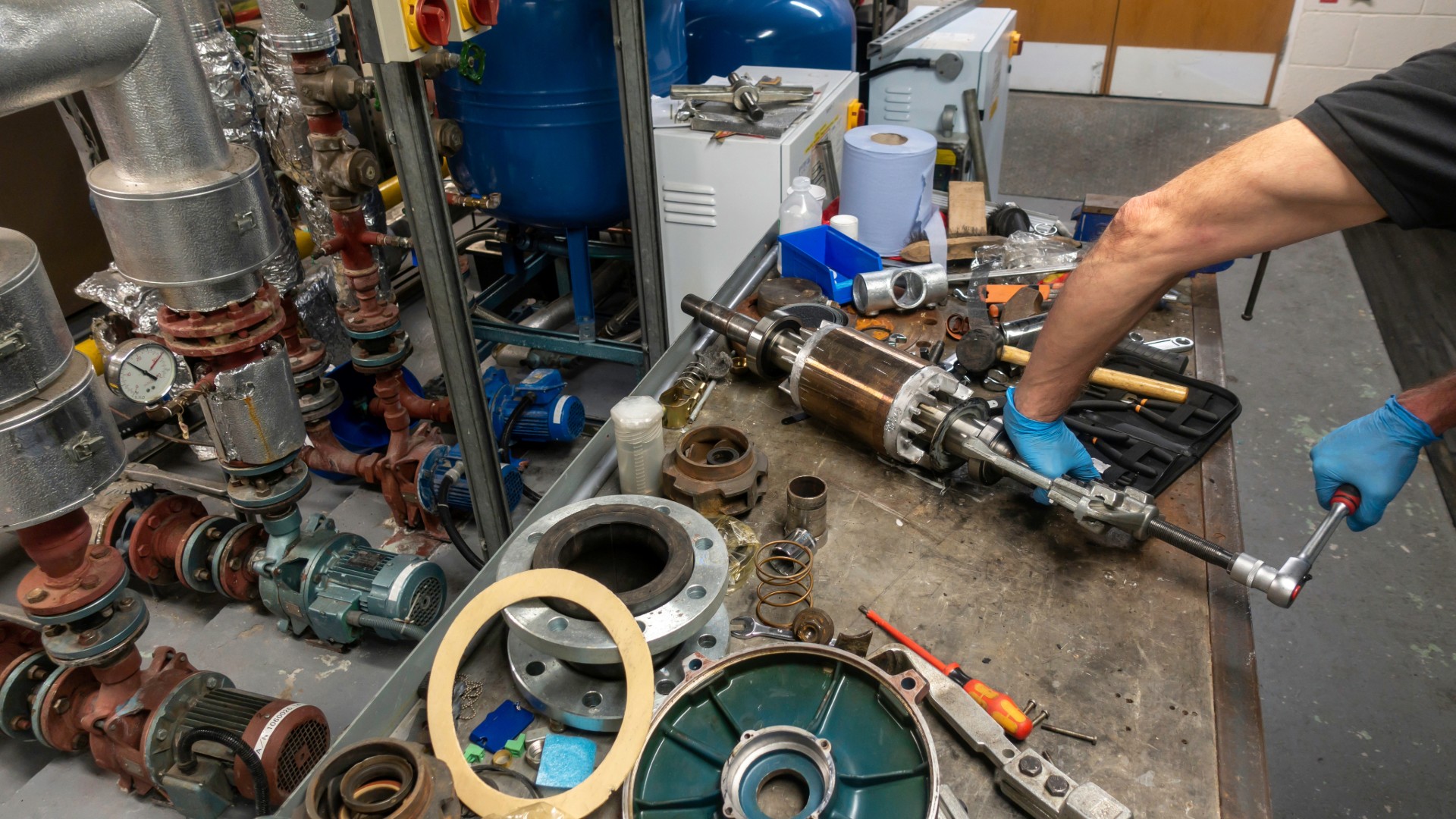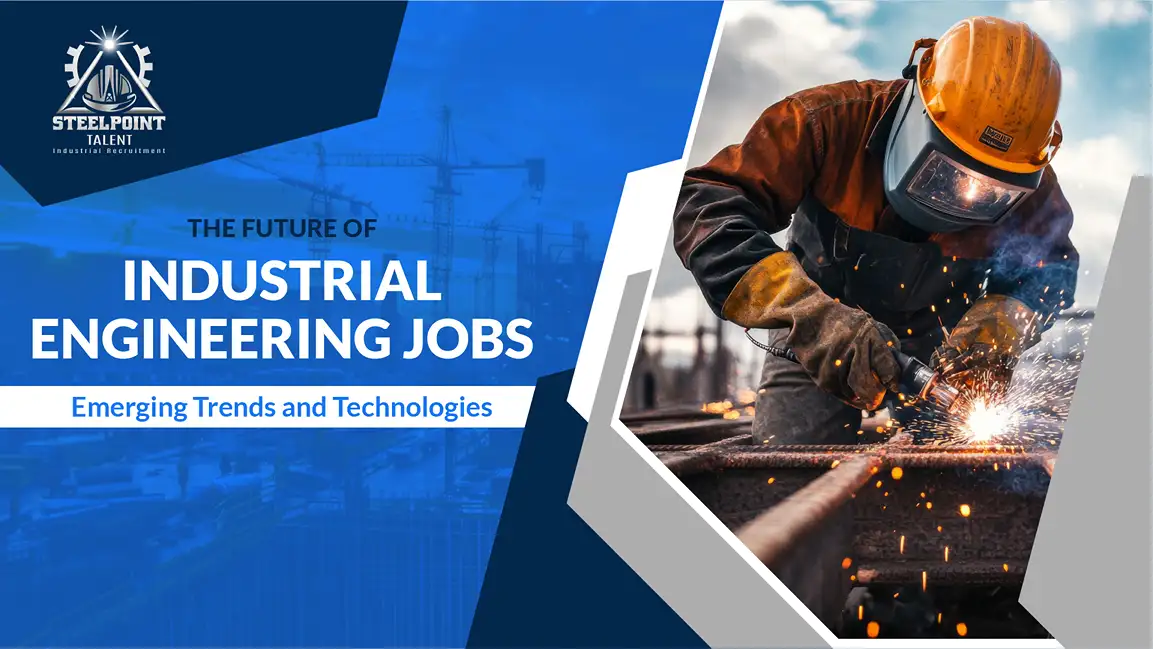The Mechanical Design Engineer Track: An Overview
The structured career path for professionals in mechanical engineering jobs offers a strategic framework that benefits both engineers and organizations alike. From foundational design tasks to executive-level leadership, each stage plays a critical role in delivering technical accuracy, procurement efficiency, and long-term project success. This progression is particularly relevant to sectors such as mining, oil and gas, aerospace, and heavy manufacturing, where engineering precision directly impacts operational continuity.
Junior/Graduate Design Engineer
At the entry point of mechanical engineering jobs, junior or graduate design engineers focus on developing core skills such as 2D/3D CAD modeling, technical drawing interpretation, and basic FEA. Under the supervision of senior staff, they assist in design reviews, prototyping, and tolerance analysis. These early-career professionals are crucial for supporting frontline tasks while learning the standards and systems that define high-value jobs in the mechanical field.
Design Engineer
Mid-level design engineers manage design modules for industrial and energy-based projects. Their responsibilities span tolerance stack-ups, validation testing, and cross-discipline collaboration. They help shorten design-cycle delays and maintain technical consistency, making them vital assets in mechanical engineer jobs.
Senior Design Engineer
Senior professionals in mechanical engineer jobs take ownership of major subsystems, lead internal design reviews, and manage junior engineers. Their ability to mentor, engage with clients, and troubleshoot complex design issues makes them pivotal in ensuring that technical outputs meet commercial expectations. In high-risk industries like aerospace and offshore oil operations, their input is often directly tied to performance guarantees and compliance outcomes.
Lead/Principal Design Engineer
Lead or Principal Design Engineers occupy a strategic role that combines technical leadership with project oversight. They manage cross-functional engineering teams, coordinate with quality assurance and manufacturing, and often specialize in industry-specific domains such as defense, thermal systems, or automated equipment. At this stage of the mechanical engineering jobs journey, decisions carry organizational impact, from cost optimization to innovation in product development.
Engineering/Project Manager
This level signifies a shift from purely technical tasks to leadership in planning, budgeting, and team development. Engineering managers balance project constraints with talent utilization, working closely with procurement heads and executive teams to align engineering resources with operational goals. Their ability to integrate technical and business metrics positions them as key enablers in long-term jobs in mechanical programs. For organizations seeking qualified professionals in this space, SteelPoint Talent offers specialized hiring support to align talent with project goals.
Technical Director or CTO
At the top of the mechanical design track, Technical Directors or CTOs drive company-wide innovation strategies, technology roadmaps, and product architecture decisions. These roles influence not only internal engineering systems but also supplier strategy, compliance frameworks, and global delivery models. For organizations focused on scalability and technological competitiveness, these senior-most mechanical engineering jobs provide critical leadership in aligning technical direction with ROI.
Real-World Applications and Sector Relevance
Across mining operations, aerospace defense platforms, and large-scale infrastructure projects, mechanical design engineers enable systems that must function in extreme conditions with minimal downtime. The success of these projects hinges on accurate design, material specification, and integration planning, capabilities embedded at every level of the mechanical engineering jobs hierarchy. Procurement leaders benefit when each role is clearly defined, reducing ambiguity in vendor selection and improving bid accuracy.
Skills Progression and Certification Relevance
The pathway from entry-level roles to executive leadership is marked by increasing specialization and certification. Early-career engineers benefit from mastering CAD and simulation tools, while mid-level roles often require knowledge of international standards (e.g., ASME, ISO). Senior positions often favor PMP certification or Six Sigma credentials. For those hiring in mechanical engineer jobs, these indicators serve as valuable benchmarks when evaluating candidates’ fit for project-critical roles.
From Design to Leadership: Career Pathways Beyond CAD
The journey through mechanical engineering jobs doesn’t end at design. As professionals gain experience and industry exposure, they often pivot toward roles that expand their influence beyond CAD tools and into areas of leadership, strategic planning, and digital transformation. These post-design pathways offer multiple tracks tailored to individual strengths, whether technical, managerial, or a hybrid of both.
Project Engineer vs. Project Manager Path
Project Engineers typically serve as the bridge between design teams and execution units. They manage scope, coordinate vendor and manufacturing inputs, and oversee the technical side of project delivery. In contrast, Project Managers take on full lifecycle ownership, including budgeting, scheduling, and stakeholder communication. Both roles are natural evolutions of mechanical engineer jobs, offering growth for individuals with a balanced mix of design background and systems thinking.
These roles are increasingly common in high-investment environments such as aerospace, renewable energy, and capital-intensive infrastructure projects. Organizations recruiting for these jobs in mechanical fields value candidates with strong risk management capabilities and the ability to align project timelines with procurement and compliance goals.
Lead Engineer vs. Technical Specialist vs. Functional Manager
Professionals in mechanical engineering jobs may choose between deep technical specialization and broader team management. Lead Engineers direct technical delivery and ensure engineering standards are met across product lines. Technical Specialists, on the other hand, become subject matter experts in areas like thermal systems, fluid dynamics, or advanced materials.
Meanwhile, Functional Managers focus on team leadership, mentoring, and internal process optimization, balancing technical input with organizational culture and performance metrics. Each of these paths allows professionals to advance in mechanical engineer jobs based on aptitude and career vision.
Technical Director and CTO Responsibilities
For those in the executive tier of mechanical engineering jobs, roles such as Technical Director or Chief Technology Officer (CTO) carry enterprise-wide influence. These leaders shape product architecture, lead innovation cycles, and make decisions tied directly to revenue growth, vendor strategy, and market positioning. Their strategic input helps steer not only product development but also procurement and technology adoption frameworks across the company.
Cross-Functional Roles and Sector Integration
In today’s industry landscape, the boundaries between engineering, operations, and IT are increasingly blurred. Many experienced professionals in mechanical engineering jobs transition into cross-functional roles such as R&D engineers, process optimization leads, or digital transformation architects. These positions enable them to apply mechanical fundamentals to areas such as predictive maintenance, manufacturing automation, and supply chain digitization.
This versatility is particularly valuable in Industry 4.0 environments, where mechanical insights intersect with data science, machine learning, and systems engineering, creating new hybrid jobs in mechanical fields.
Strategic Influence and Organizational Impact
Beyond core engineering deliverables, these leadership roles contribute significantly to procurement strategies, risk mitigation, and ROI tracking. Engineering leaders with cross-functional expertise play a pivotal role in aligning technical design with commercial and logistical constraints. Companies that invest in developing these advanced mechanical engineering jobs capabilities benefit from faster project delivery, stronger vendor performance, and reduced cost overruns.
Salary Benchmarks and Compensation Trends (2025 Data)
Understanding compensation benchmarks is crucial for professionals pursuing mechanical engineering jobs and for organizations investing in engineering capabilities. As of 2025, salary trends vary significantly across regions, industries, and experience levels, affecting how both job seekers and employers navigate the mechanical engineer jobs market.
U.S. Market Overview
The U.S. remains one of the most competitive regions for high-paying mechanical engineering jobs. Entry-level salaries range from $68,000 to $72,000, while professionals with 5-10 years of experience in mechanical design or product development earn around $92,000 annually. Those in the top quartile, particularly in aerospace, defense, and energy engineering roles, can earn over $125,000 per year.
Sectors such as clean tech, robotics, and smart manufacturing are actively offering advanced mechanical engineer jobs requiring skills in simulation, CAD/CAE integration, and control systems. Engineers with PE licenses or certifications in Six Sigma, FEA, and advanced materials often receive premium offers.
High-Paying Industries
Among industries offering competitive mechanical engineering jobs, the aerospace, semiconductor, and renewable energy sectors lead in compensation. Engineers here are not only involved in product development but also innovation-focused roles such as failure analysis, system optimization, and IP development.
Companies leveraging digital twin technology, AI-based predictive maintenance, and integrated systems engineering increasingly value candidates in mechanical engineer jobs that merge traditional design principles with digital competencies. These hybrid roles command higher salaries and better retention packages.
Canada Market Overview
In Canada, mechanical engineering jobs offer strong compensation relative to experience and industry. Entry-level engineers typically earn between CA$58,000 and $65,000 annually. Mid-career professionals in mechanical engineer jobs, particularly in sectors such as aerospace, clean energy, and advanced manufacturing, can earn CA$85,000 to $105,000 per year. Senior engineers or those in project leadership roles may earn CA$120,000 or more, especially in major hubs such as Toronto, Calgary, and Vancouver.
Demand for talent in jobs in mechanical continues to grow in sectors focused on energy transition, automation, and infrastructure renewal. Employers in Canada increasingly seek engineers with skills in FEA, thermal-fluid systems, additive manufacturing, and digital engineering platforms.
Insights for Procurement & Budgeting Teams
Organizations seeking to fill mechanical engineering jobs should balance cost and capability. While junior hires provide initial cost advantages, seasoned professionals offer stronger ROI, especially in core roles like validation engineers, R&D leads, or design managers.
Retaining talent in mechanical engineer jobs requires investment in skill development, exposure to international workstreams, and leadership grooming. For procurement teams, competitive compensation structures are key to securing high-performing engineers aligned with long-term project and innovation goals in the jobs in mechanical segment. Partnering with industry-specific recruiters, such as SteelPoint Talent, can further enhance ROI by ensuring a precise talent match.
Industry Trends Shaping Mechanical Engineering Jobs
The nature of mechanical engineering jobs is shifting as industries adopt digital tools, automation, and integrated workflows. Today’s mechanical engineers are not just focused on drafting or design; they play a key role in simulation, system integration, and product lifecycle development across various sectors, including aerospace, automotive, robotics, and clean energy.
Modern mechanical engineer jobs increasingly demand fluency in advanced platforms such as SolidWorks, CATIA, Ansys, and digital twin systems. Engineers who can work with data-driven tools and simulation environments are better positioned for high-value roles in product development and operational optimization.
In addition, jobs in mechanical fields now require cross-functional collaboration with software, electrical, and systems engineering teams. This means professionals must blend their mechanical fundamentals with skills in automation, control systems, or even basic programming. The ability to coordinate across disciplines is a major advantage in today’s innovation-driven environments.
Certifications such as Six Sigma, PMP, or Lean Manufacturing have become key differentiators in senior-level mechanical engineer jobs, especially when stepping into leadership, quality assurance, or process improvement roles. These credentials reflect an engineer’s ability to align technical decisions with project budgets, delivery timelines, and organizational goals.
Remote work is another growing trend in mechanical engineering jobs, particularly in design and simulation roles. Engineers can now contribute to global projects from anywhere, increasing accessibility and expanding the talent pool for companies. This flexibility also enables professionals to explore more specialized or niche roles within jobs in mechanical design and systems modeling.
Sustainability and innovation are also influencing job profiles. Engineers with experience in energy efficiency, lightweight materials, and lifecycle analysis are in demand as industries shift toward greener solutions. These skills are particularly valuable in sectors such as renewable energy and advanced manufacturing.
For professionals aiming to grow their careers in mechanical engineer jobs, staying up to date with emerging technologies and industry certifications is crucial. Likewise, employers seeking talent for core mechanical engineering jobs must consider candidates who not only meet technical requirements but also bring strategic value and adaptability to evolving project needs.
Strategic Takeaways for Hiring and Procurement Leaders
For HR professionals and technical procurement teams, understanding the full spectrum of mechanical engineering roles is crucial to sourcing talent that aligns with evolving business objectives. Whether an organization is scaling its R&D division, digitizing its manufacturing processes, or expanding into new product verticals, hiring the right mechanical talent can directly influence engineering timelines, quality outcomes, and procurement efficiency.
Career Maturity Indicators
At each stage of the mechanical engineering career path, candidates bring different strengths and levels of business impact. Junior professionals in mechanical engineering jobs typically offer high adaptability and strong CAD skills, while mid-level engineers bring system integration, process optimization, and cross-team coordination capabilities. Senior-level hires demonstrate leadership readiness, client-facing experience, and decision-making maturity, making them ideal for managerial or strategic positions.
Procurement and HR leaders must assess not only the candidate’s resume but also their trajectory and cross-functional exposure. For example, a professional applying for advanced mechanical engineer jobs in aerospace or energy should ideally have hands-on experience in multidisciplinary teams, simulation tools, and compliance protocols.
Talent Fit for Industry Needs
Sectors such as automotive, defense, and clean energy are increasingly requiring hybrid profiles, specifically engineers who can bridge the gap between mechanical and digital systems. Matching the right profile to the job is crucial. For instance, mechanical engineering jobs in product lifecycle management demand software fluency, while those in manufacturing operations prioritize tooling knowledge and lean process design.
Understanding sector-specific needs helps procurement teams source jobs in mechanical that align with project goals and budget constraints. A well-matched hire can improve product throughput, reduce engineering change cycles, and even enhance supplier integration timelines.
Recognizing Leadership vs. Technical Specialization
Not all engineers will, or should, transition to leadership roles. Some candidates thrive by deepening their technical expertise in niche domains, such as thermal engineering, FEA, or vibration analysis. Others demonstrate communication, mentoring, and project leadership traits that align better with engineering management roles.
Being able to distinguish these paths allows hiring managers to structure talent pipelines more effectively and tailor interview processes to attract candidates suited for strategic mechanical engineering jobs or hands-on technical roles.
Planning for Long-Term Talent ROI
Organizations benefit most when they take a long-term view of talent planning, investing in training, mentoring, and succession planning. High-potential engineers often advance from individual contributors to technical leads or managers when provided with structured growth opportunities.
Succession planning ensures continuity and promotes the retention of institutional knowledge. For companies scaling their operations or entering new markets, retaining skilled professionals in mechanical engineering jobs is often more cost-effective than repeated recruitment cycles.
Working with industry-aligned talent partners or recruitment specialists, such as SteelPoint Talent, can enhance the sourcing of high-caliber candidates for core mechanical engineer jobs. This helps avoid skill mismatches and ensures better alignment with internal project timelines.
When hiring is aligned with maturity level, technical scope, and sector demand, companies unlock the true ROI of mechanical engineering jobs, measured not just in output but in innovation, reliability, and market speed.








